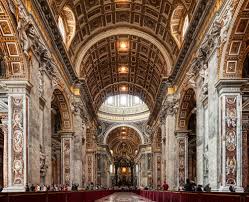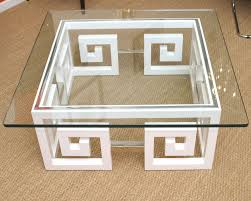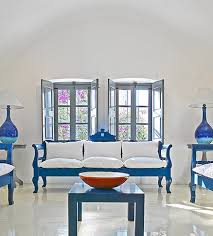https://www.youtube.com/watch?v=x1bZuVdfP7I
This Discovery documentary shows the true horrors and tries to debunk some myths about the Colosseum.
Saturday, January 31, 2015
Greek Mythology
https://www.youtube.com/watch?v=MeDffr9Jy4I
This Youtube video is a list of some Greek mythological creatures that can be seen in some Greek motifs and other embellishments.
This Youtube video is a list of some Greek mythological creatures that can be seen in some Greek motifs and other embellishments.
Classical Rome
Classical Rome served as a catalyst in spreading art and civilization. In its prime, it was the greatest power west of China. Rome extended from the Persian Gulf to Spain and from North Africa to Britain. The Romans were masters of road construction and architecture. The added to the classical order of columns. They used extravagant ornamentation in their furniture. They are credited with the invention of the arch, the barrel vault, and domes. A major building from the Romans is the Colosseum. It seats at least 50,000 people and was the center of entertainment. It it what a modern day sports arena would be considered. The building includes 3 of the 5 classical orders and each level has a podium, column, and entablature. It was constructed in 80 AD. The Pantheon is another grand peice of architecture. Built in 126 AD, it was commissioned by Marcus Agrippa. It is a round temple with a dome and includes a 142 ft high and 142 ft in diameter oculus at the top. Some of the residential building include an Insula, like a modern day apartment building, 5-6 stories with balconies and the ground floor was a shop. They were often where the poor lived and some stories were added with wood which made them susceptible to fire. Another is a Domus. It had an atrium with a slanted roof and a pool below to catch water. A Tablinum held important family records, and a peristyle was a columned porch or courtyard, The Domus also included private rooms. The interiors were docated with mosaics, stucco, and frescoes.
Ancient Design

Room in Pompeii

Slanted roof with pool below

Decorative ceilings and use or arches
Modern

Use of columns and arches

Peer review
Cally: I liked how she really went into the detail about the background and broke everything up into separate paragraphs for painting and sculpture and architecture, etc. She had lots of lovely examples as well.
Karri: I liked how her pictures were placed within the text and not just at the end. She had wonderful pictures that really gave a good visual of what she was talking about in her blog.
Colosseum
Dome


Ancient Design
Room in Pompeii
Slanted roof with pool below
Decorative ceilings and use or arches
Modern

Use of columns and arches
Peer review
Cally: I liked how she really went into the detail about the background and broke everything up into separate paragraphs for painting and sculpture and architecture, etc. She had lots of lovely examples as well.
Karri: I liked how her pictures were placed within the text and not just at the end. She had wonderful pictures that really gave a good visual of what she was talking about in her blog.
Colosseum
Dome
Classical Greece
The Classical Greeks were masters of philosophy, science, fine arts, geography, medicine, legal systems, and astronomy. Greece is surrounded by three seas, the Aegeon, Mediterranean, and Ionion at this time. The climate changed with the seasons; hot summers, bitter winters. They produced grain, grapes, olives, and salt. The Greeks made huge strides in architectures. The Parthenon was built in 438 BC, it displays the early stages of the classical orders. The building has a visual sense of balance but not quite a physical one. The columns are not the same size or spaced the same. Their domestic homes were far less impressive than the temples. They were constructed of mudbrick, not marble, with a stone foundation and a wooden framework and terracotta roof tiles. There was a courtyard in the middle and few windows for security and to limit heat. Their temples and homes were decorated with motifs that had floral or marine themes. The Greek key and Fret were invented at this time and those pattern are often used today in our modern design. We mainly know abut the Greek furniture through their pottery that has survived. The Thronos was a formal chair of honor, or a throne. It was generally made out of marble and had a high back. The Klismos was the most graceful and influential pieces. It was crafted out of wood and has splayed legs and a curved back. The Diphros was a stool without arms or a back. It was made of wood and the most expensive ones were made of ebony and the legs were dipped in silver. The Kline was a bed that functioned as a sofa and was often used for dining. It had curved headboards and the mattresses were stuffed with wool or feathers. Tables were small and portable and took into account the height of the Kline so it could be stored underneath it.
Classical examples

Here you can see the use of the marine themed motifs and the emphasis on the color blue.

The Parthenon

A Greek monastery kitchen in Athens
Modern implications

The Greek Key

Emphasis on blue, splayed legs of chairs
Peer review
Haley: I liked how she went into detail about the domestic homes and I enjoyed her picture examples.
Samantha: I liked how her statement was short and to the point and I also think she had great pictures.

Use of blue and Greek Key
Classical examples
Here you can see the use of the marine themed motifs and the emphasis on the color blue.
The Parthenon
A Greek monastery kitchen in Athens
Modern implications
The Greek Key
Emphasis on blue, splayed legs of chairs
Peer review
Haley: I liked how she went into detail about the domestic homes and I enjoyed her picture examples.
Samantha: I liked how her statement was short and to the point and I also think she had great pictures.
Use of blue and Greek Key
Subscribe to:
Posts (Atom)